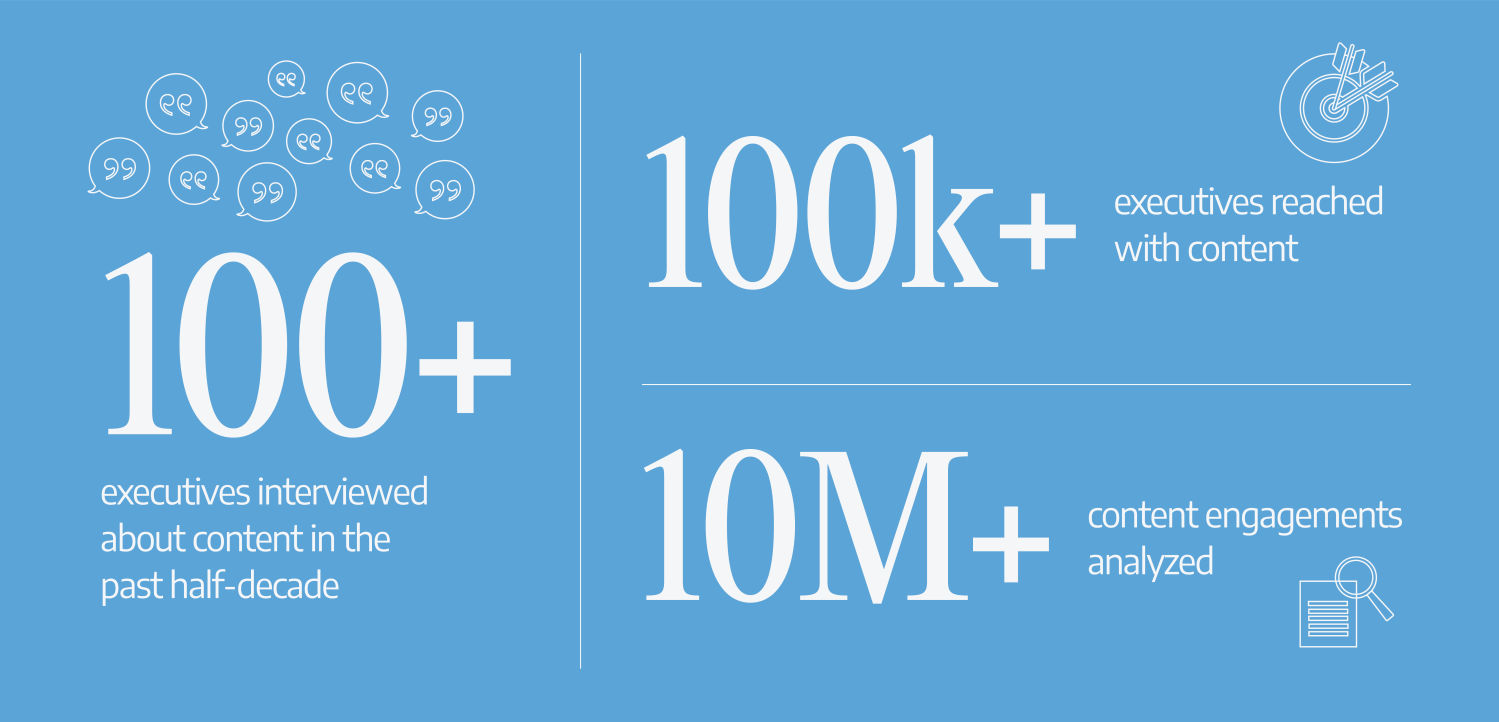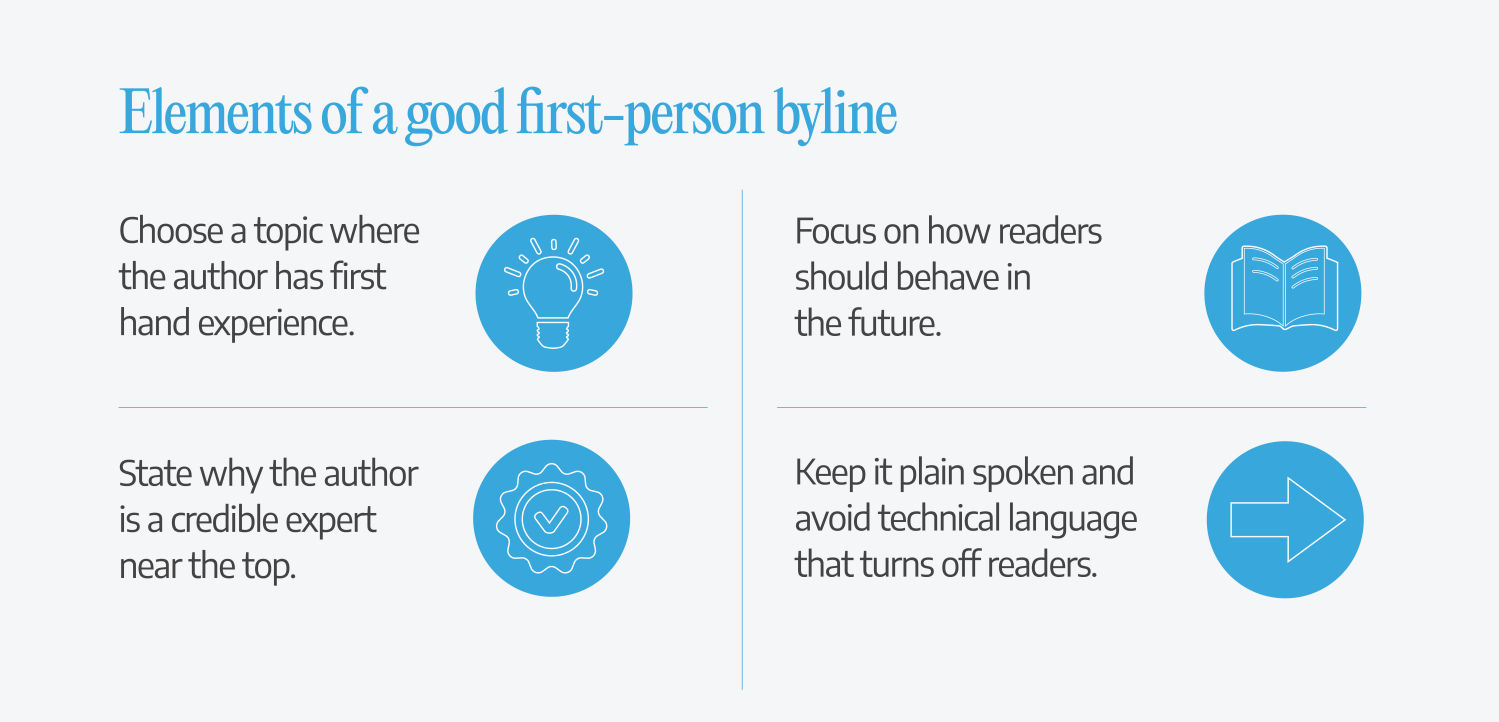
Is Your Thought Leadership Having the Right Impact?
Keeping what readers want front of mind is the key to making content relevant, credible, and effective
As a business reporter at the Wall Street Journal, I met with a seemingly endless stream of marketing and communications executives who were hoping to get me excited about their pitches.
Most just talked about some new product feature or enhancement. I usually left those meetings struggling to figure out how to make what I’d heard interesting to our readers. More often than not, I couldn’t and would end up declining to write about those companies. I used to headline the stories they pitched, only half in jest, “Company you’ve never heard of does something you don’t care about.”
So when I started Message Lab, I wanted to be sure our clients communicated in ways that appealed to the people they were trying to reach, not merely their internal teams. In one of our first proposals, I suggested finding and interviewing people who fit the client’s customer profile about what they valued most in content. It was like being back in a newsroom, using the skills I’d developed then to cut through people’s initial responses and surface something interesting. (We’re always looking for opportunities to apply the tradecraft of journalism.) These interviews have been a core part of our approach ever since.
Here’s a deeper look into the most effective methodologies for making thought leadership content your audience cares about.
Storytelling is integral to effective content marketing
Over the last five years, we’ve talked to hundreds of professionals about what they want from thought leadership, including Airbnb hosts, corporate finance chiefs, small business owners, and VPs of engineering at web-based companies. To our surprise, they were all looking for the same things: stories about how someone like them solved a problem they could relate to.

The data we’ve collected from more than 10 million engagements with our articles makes clear that’s what readers want, too. In fact, the finding is so consistent that we long ago began treating it as a rule, and now this storytelling construct is the central tenet of the content programs we put together for clients.
Simply put, people trust advice from peers and draw inspiration from their experiences. A corporate security chief we interviewed summed up this core tenet of effective thought leadership this way: “I just want to read about how people overcame obstacles that seemed insurmountable.”
Keeping what readers want front of mind is the key to making your content relevant, credible, and effective. And best of all, it’s an easy insight to apply.
Keep the focus on your audience
In a business context, what’s commonly referred to as “thought leadership” demonstrates a company’s prowess in a particular field or topic. A lot of companies develop thought leadership strategies as a way to promote their own executives and corporate points of view, but they may be missing the point.
People often see a company’s executives as salespeople, not experts and not peers. As one seed-stage startup founder we interviewed said: “I’d believe an entrepreneur who had just done something a lot more than some dude who put together a PowerPoint presentation and who’s never done it themselves.”
This founder and the 17 others we interviewed for this project all told us a version of the same thing. They wanted advice for running their businesses, but what they valued most was hearing how other founders had applied this advice. Based on these interviews, we created a series of 40-plus articles, each of which included examples from multiple startup founders. The client’s executives “introduced” each piece with a short note about why a topic was important.

These pieces were consistently the best performing content the client published, averaging close to 3 minutes of engaged time — the amount of time someone spends actively reading an article — well above the 1 minute benchmark we use. These readers also came back to the client’s site multiple times, which we found increased the likelihood that they’d become customers.
Recast your execs as practitioners
By comparison, the bylined stories by executives we’ve measured tend to fall flat with readers, but that problem may have more to do with execution. Our data shows these pieces have high engagement when the author is writing about their experience as opposed to sharing their thoughts on an industry trend.
This column by software giant ServiceNow’s CFO is a good example of effective storytelling by making that experience relevant to your audience by positioning it as peer advice. Rather than offer tips about technology to the technology pros who make up ServiceNow’s customer base, she uses her perspective as a finance chief — the person who controls the purse on tech spending — to outline how she decides to greenlight projects.
As measured by engaged time, the piece was one of the most successful ever published by ServiceNow’s thought leadership program. It was also among the most shared pieces of Workflow content ever on LinkedIn. Other columns we’ve studied that took a similar approach produced comparable results, according to a study we performed.
How-to articles can backfire
There’s another reason to focus on a thought leadership strategy that shares stories of real people: Experienced readers tell us they don’t trust how-to articles that don’t provide real-world examples or cite credible experts or data. (Remember, we’re talking about thought leadership, not tactical tutorials.)
The key insight we’ve taken from this is that readers are pretty savvy — and they know how-to content is often a tactic to acquire visitors from search. To be clear: How-to articles can have a lot of value. We do a ton of SEO research, pitch stories based on keywords, and sometimes give our writers SEO outlines. Our best SEO stories tend to have the highest engaged time and deliver the most lifetime value of any work we do. But they are also crafted using journalistic tools and techniques, and include attribution, data, and quoted experts, which give the stories relevance and credibility.
For me to spend time on something, I have to know the author spent time on it.
The problem is the world is full of bad how-to content, written by people who focus on acquiring eyeballs and not as much on the experience readers have when they arrive on a page. Pieces written by a content marketing manager who spent a day or two conducting online research isn’t likely to deepen a relationship with professionals who spend lots of time thinking about a topic.
“For me to spend time on something, I have to know the author spent time on it,” said one person we interviewed. He says he skims articles to see whether it includes real examples from his peers, and if it doesn’t, he dismisses it as “crap” marketing.
There’s another reason how-to thought leadership often falls short for sophisticated audiences: People feel that their circumstances are special and don’t want one-size-fits-all advice. “Really generic stuff doesn't apply to my business,” one CFO told us, echoing a sentiment we’ve heard time and time again. “I glaze over on that stuff.”
The secret to offering advice to expert audiences
Here’s the thing: Even experts are hungry for advice. Andrew Stanton, the Pixar director, put it well in a TED talk: your “audience actually wants to work for their meal. They just don’t want to know that they’re doing that. That’s your job as a storyteller, is to hide the fact that you’re making them work for their meal.”
At Message Lab, we incorporate this into our work through what we call “war stories” — concrete examples of how a peer applied a piece of advice. These are usually about an experience that left the subject hardened, scarred, and a little wiser. We will conceive the pieces as a how-to, use subheads that could double as step-by-step bullet points, and even use “how to” in the URL. But the story itself, like this one, is a tale of one person’s struggle against long odds.
And readers really do like to do the work of extracting the relevant lessons: Our data show these stories are consistently engaging. And as one interviewee told us, “[War stories] resonate with me and I can understand that specific circumstance and how I can take nuggets from that to apply it to my situation.”
Don’t over index to any one format
There are lots of ways to create thought leadership marketing content that features peer advice. You can do this through profiles, Q&As, roundtables, reported articles or most any format. Our data show that audiences don’t have a preference for one over another when it comes to engaging with storytelling in content.
So as you look for opportunities to feature people, keep the focus on how they solved a problem or approached an issue, not how they bliss out with your company’s product. Your audience will thank you with their attention.
About the author

Ben Worthen
Ben started Message Lab because he believed that organizations would get better results if they talked more about topics people care about and less about their products. He also understood that convincing the world that this is the case would require data to prove it. Prior to Message Lab, Ben was a reporter for The Wall Street Journal, where he covered the tech industry and wrote more than 50 Page One stories. He was also editor-in-chief at Ready State and head of content at Sequoia Capital. He is based in the San Francisco Bay Area.




